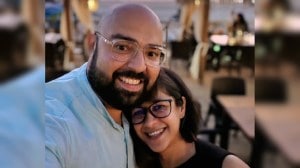How DNA evidence helped capture a killer who went undetected for 58 years
Ryland Headley was charged with the crime following a 2023 review of the case files, which triggered a fresh investigation of the available evidence.
 A 92-year-old man convicted of the murder and rape of Louisa Dunne in 1967 has been given a life sentence with a minimum term of 20 years. (Avon and Somerset Police, UK)
A 92-year-old man convicted of the murder and rape of Louisa Dunne in 1967 has been given a life sentence with a minimum term of 20 years. (Avon and Somerset Police, UK)A 92-year-old man was on Monday (June 30) convicted of the 1967 rape and murder of a Bristol woman, closing a cold case that had remained unsolved for 58 years. The sentencing in both cases will be announced on Tuesday.
Ryland Headley, in his 30s at the time of the crime, had previously been convicted of breaking in and raping two elderly women at their homes. The police described these crimes as being “eerily similar” to Dunne’s murder. Senior investigative officer Dave Marchant described Headley as a “dangerous serial offender” with a “shocking and abhorrent history”.
British police have described Dunne’s murder as the oldest cold case to be solved in UK history.
Headley was charged with the crime following a 2023 review of the case files, which triggered a fresh investigation of the available evidence. His DNA was found to be a match with the semen on the victim’s clothes.
The murder that shook a Bristol neighbourhood
 Louisa Dunne in her younger years (Avon and Somerset Police, UK)
Louisa Dunne in her younger years (Avon and Somerset Police, UK)
Louisa Dunne was a two-time widow who lived a solitary life, confined to her home and neighbourhood in Easton, Bristol. At 75 years old, she was a frail woman who socialised with her neighbours and acquaintances from her doorstep. She was estranged from her two children from her first marriage. While some neighbours remembered her as a kind person “who wouldn’t hurt a fly”, people who knew her – including her daughter Edna – claimed at Headley’s trial that “she drank too much”, the BBC reported.
On the morning of June 28, 1967, neighbours realised something was amiss when they saw she had not collected the daily newspaper outside her entrance. Two neighbours would later say that they had heard a scream the previous night.
She was later found dead in her front room, bearing bruises to her neck, and an indication that she had been gagged. Forensic evidence was limited – while a swab tested positive for semen, only a partial palm print was recovered, indicating the area beneath the left little finger. Her death was ruled as asphyxiation due to strangulation and pressure on the mouth.
Despite this limitation, the police collected the palm prints of all males aged between 15 and 60 within a 2.4 km radius of Dunne’s home. These included those convicted of a burglary or sexual offence, homeless people, and all soldiers who were absent without leave on the day of the crime. Detectives conducted 8,000 doorstep visits and recorded 2,000 witness statements in this case.
The trail eventually went cold, given the limited advancement of scientific examinations at the time.
How Headley evaded conviction for 58 years
Headley was not one of the fingerprinted persons, as he lived 2.6 km away, just outside the police’s catchment area. He had not been convicted of any crime at the time.
However, he would be convicted a decade later for the rapes of two elderly women, aged 84 and 79, in their homes in Ipswich at night. This time, the police fingerprinted 5,000 men within a month. Headley pleaded guilty to both rapes as well as 10 burglary cases. It was later found that he preyed on the homes of elderly women living in the same area, revealing his extensive local knowledge of the area.
Headley’s DNA would be added to the police database only in 2012, when he was arrested for an assault for which he was not charged. However, he did not submit a palm print, telling officers he had arthritis.
The 2023 review that reopened the case
In 2023, Major Crime review officer Joanne Smith reviewed the boxes of evidence connected with Dunne’s murder. The meticulously recorded and preserved evidence included crime scene photographs, detailed statements of all connected, DNA samples from the victim, and the skirt she was wearing at the time of the crime.
A careful examination of the skirt yielded a semen sample, which forensic scientist Andrew Parry of Cellmark Forensic Services used to establish a link with Headley. In his court deposition, Parry said, “Semen that is deposited on clothing can persist for a long time. If you wash it thoroughly, you may get rid of it, but it may persist even if you wash it. It can last for many years.”
The semen sample helped yield a full DNA profile, with the suspect indicated to be alive. Parry told the court that it was a “billion times” likely that the sperm cells originated from Headley.
Next steps in the case
Despite Headley’s conviction and the clinching DNA evidence, the investigating team will need to establish that he definitely lived in Bristol when the crime was committed, and all supporting evidence to empower the Crown Prosecution Service. Headley’s advanced age has also been noted as a matter of concern.
Investigators are also probing whether Headley could be guilty of other similar crimes.





- 01
- 02
- 03
- 04
- 05

































